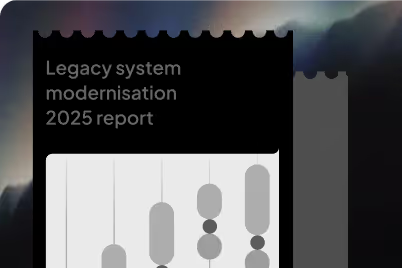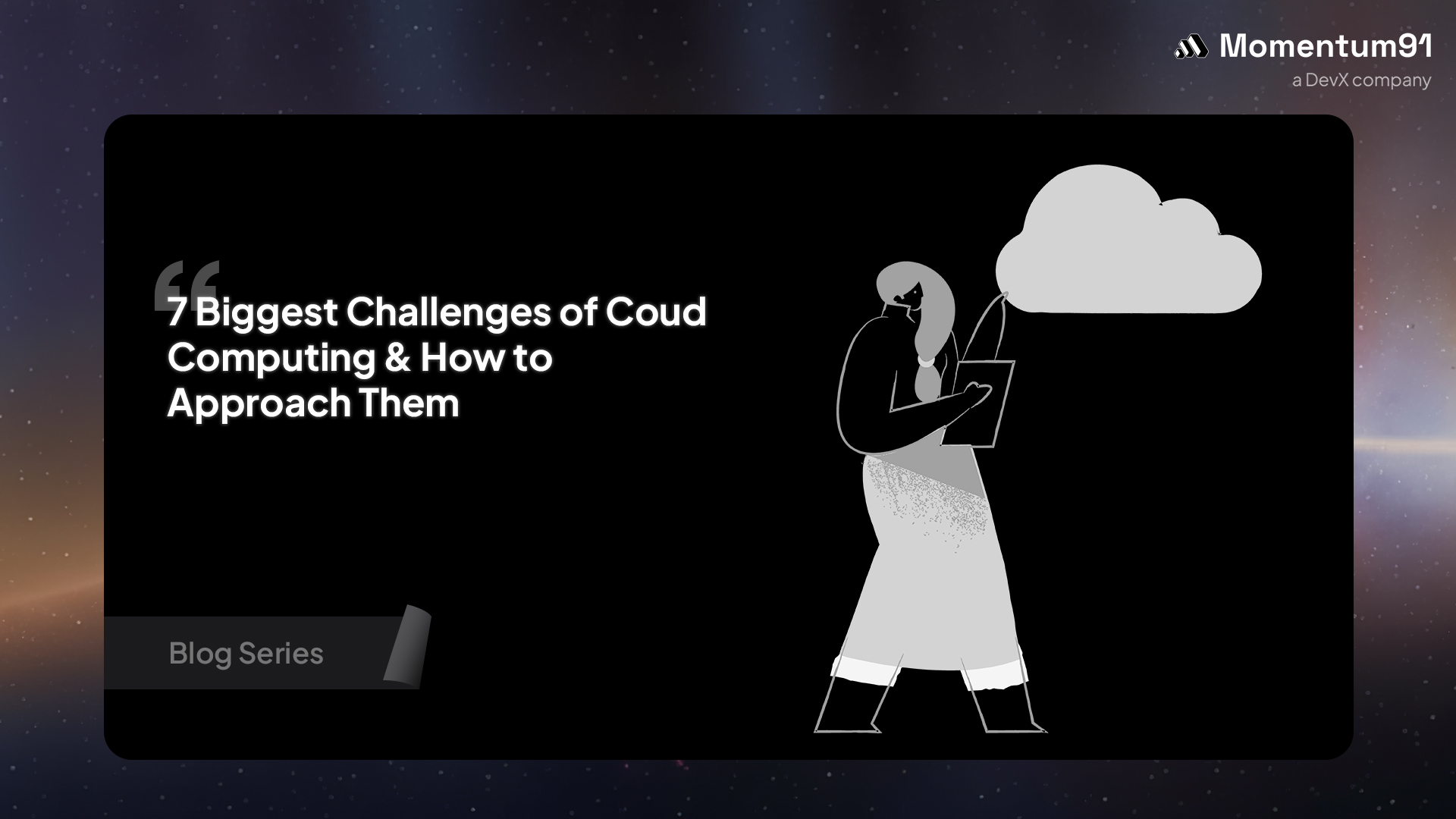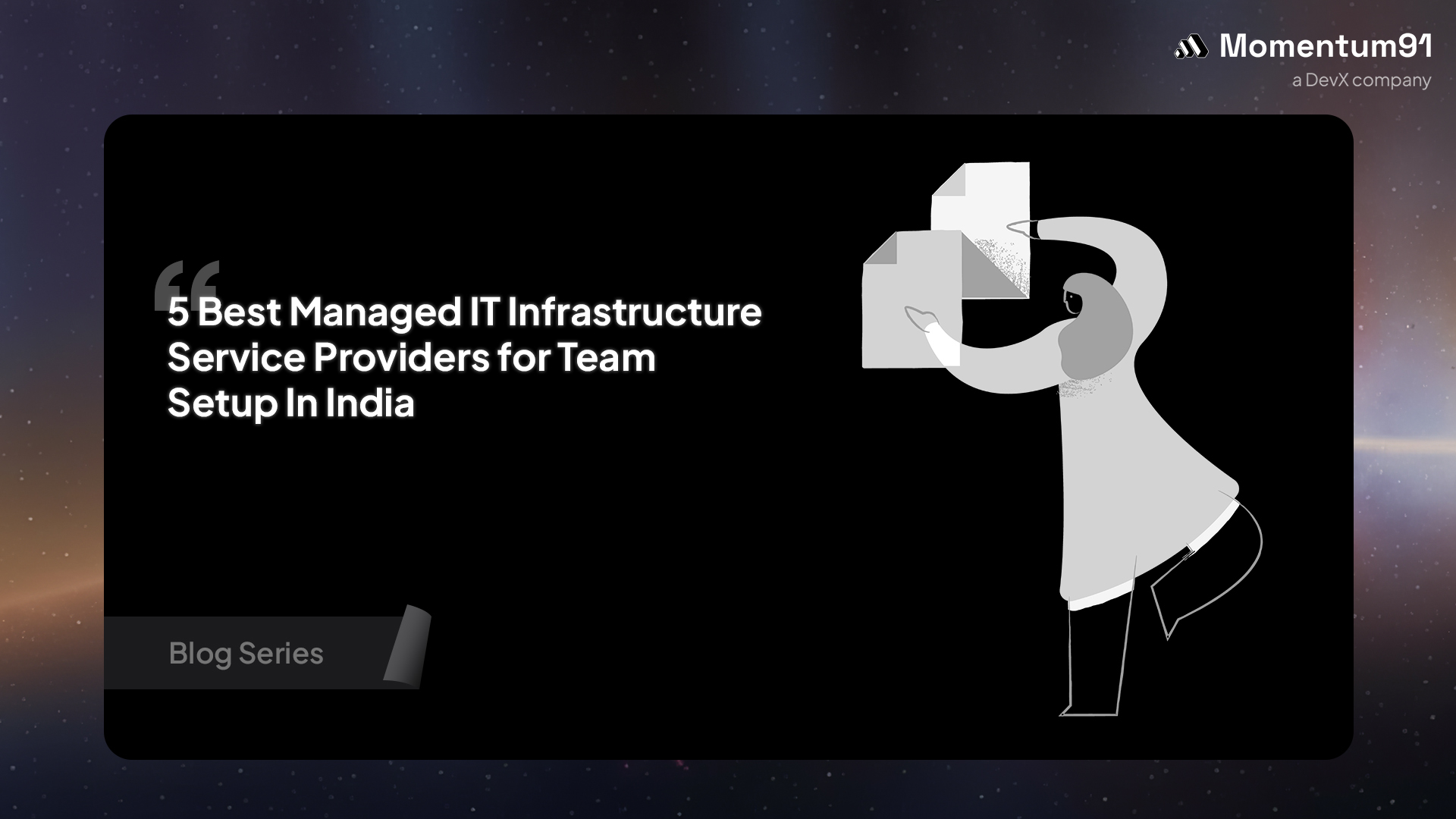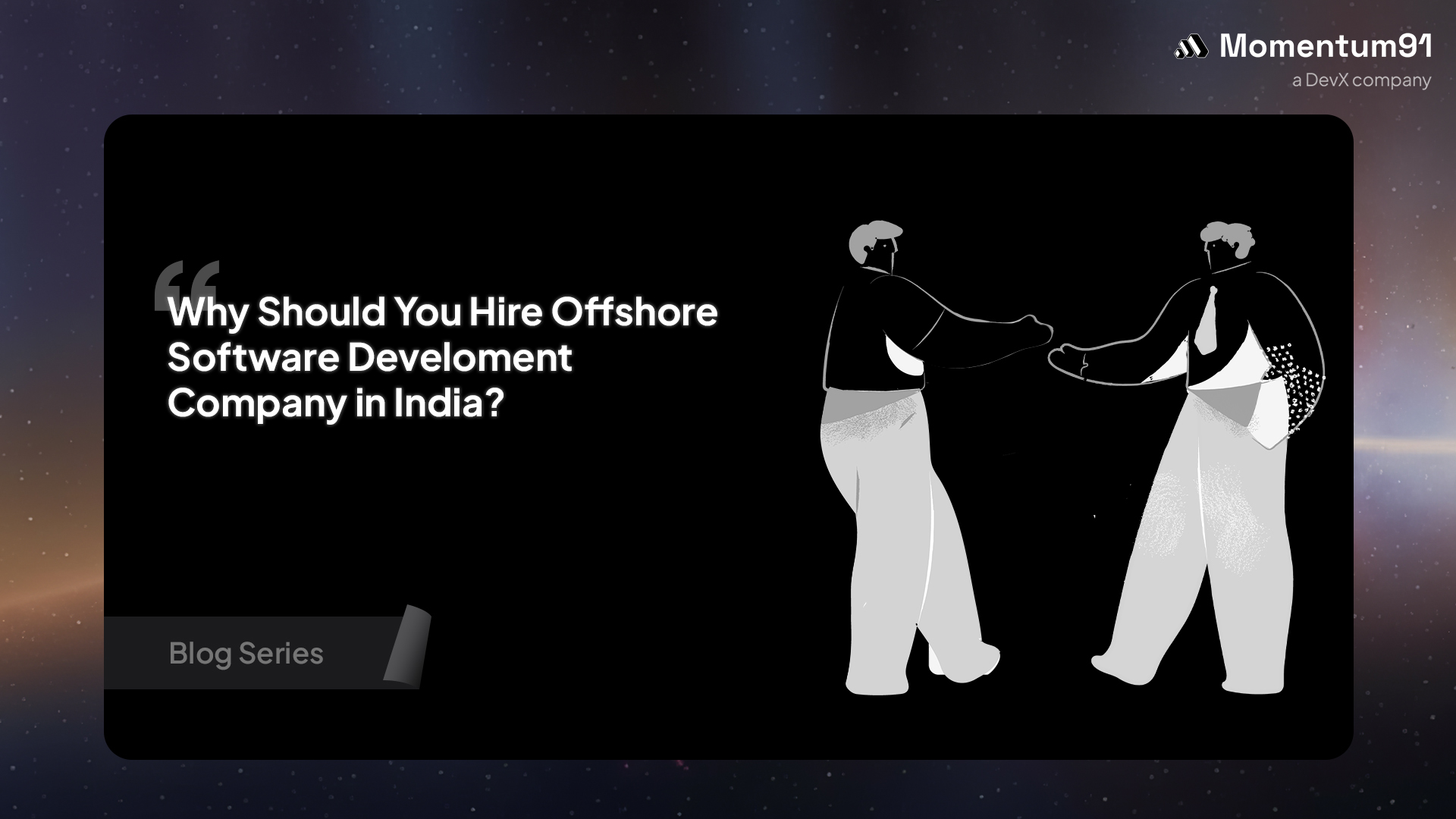The 5 Core Components of HRIS: An Essential Guide

HR runs better when everything connects in one place. Manual records and scattered spreadsheets slow progress, waste time, and cause errors. A Human Resource Information System (HRIS) solves these problems with one organized platform that keeps employee data accurate and easy to access.
Over 70% of companies now run hybrid or remote teams, and most plan to increase HR tech spending in 2025. That makes HRIS software a practical investment. It brings payroll, attendance, and performance data together so HR teams can focus on results.
This guide explains the five main components of HRIS and how Momentum91 helps businesses build smarter, integrated HR systems that improve both efficiency and decision-making.
What is an HRIS?
A Human Resource Information System (HRIS) is more than just a digital filing cabinet. It’s the control hub for every HR process in an organization. Instead of juggling separate tools for payroll, attendance, and performance tracking, companies use a single HRIS software to manage everything through connected data flows.
When an employee is hired, their details automatically sync across onboarding, payroll, and compliance modules. When they update a bank account, payroll adjusts instantly. This interconnected design eliminates duplicate data entry and compliance errors, two of the biggest pain points in HR operations.
Modern components of HRIS include built-in analytics that reveal workforce trends such as turnover risk or skill gaps. For HR leaders, that means decisions are based on evidence, not estimates. It’s practical, measurable, and far more reliable than manual HR systems
The 5 Critical Components of HRIS Your Business Can’t Ignore
A complete Human Resource Information System (HRIS) works as a chain of connected systems, each handling a specific part of the employee lifecycle. When these components of HRIS function together, they turn routine HR management into a streamlined, data-driven process.
Let’s look at each core module that shapes an effective HRIS.
1. Core HR: The System of Record
Every successful HRIS software starts with Core HR, the foundation of the entire system. This component manages all employee data, including personal details, employment history, job titles, departments, and compliance documents, within one secure database.
Personnel management depends on Core HR because it maintains a single version of truth for every employee. When an update is made here, it automatically syncs across payroll, performance, and reporting modules. This prevents duplicate entries, reduces compliance risks, and keeps workforce information reliable.
In modern organizations, Core HR functions go beyond data storage. They connect employee identity with HR analytics and reporting, creating accurate insights for leaders. Without a strong Core HR base, even the most advanced human resource information system cannot deliver measurable results.
2. Payroll and Compensation: The Get Paid Engine
Payroll is one of the most sensitive functions within a Human Resource Information System (HRIS). A single miscalculation can affect employee trust and expose the company to penalties. The Payroll and Compensation module prevents these issues by automating the full payroll cycle, from salary computation to tax deductions and benefit tracking.
For example, when an employee updates their tax information or changes a health plan, the HRIS software automatically adjusts deductions in the next pay cycle. There’s no need for manual intervention, which reduces errors and delays.
This module also integrates seamlessly with time and labor management, ensuring that approved work hours instantly reflect in the payroll sheet. It manages direct deposits, overtime, bonuses, and year-end forms.
With modern HR analytics and reporting, businesses can compare compensation trends, forecast payroll budgets, and maintain compliance with local and federal tax laws. In short, this component turns payroll from a repetitive task into a precise, automated process that builds financial accuracy and employee confidence.
3. Time and Labor Management (TLM): The Who Worked When Tracker
The Time and Labor Management module is one of the most useful components of HRIS because it records employee attendance, schedules, and work hours accurately. It replaces manual timecards with automated tracking, reducing payroll errors and compliance risks.
For instance, employees can clock in using mobile or biometric systems with location verification. Managers get real-time visibility of attendance, shift changes, and overtime hours without depending on separate spreadsheets.
When an employee requests time off, the Human Resource Information System (HRIS) automatically validates their leave balance, routes it for approval, and updates payroll data. This smooth coordination between scheduling and pay ensures accuracy and saves hours of manual correction work.
A modern HRIS software uses this module not just for tracking hours but also for forecasting workforce needs through HR analytics and reporting, improving both efficiency and employee satisfaction.
4. Talent Management: The Grow Your People Suite
The Talent Management module is one of the most strategic components of HRIS because it focuses on employee growth, retention, and performance. This part of a Human Resource Information System (HRIS) goes beyond managing data. It builds structured workflows that support recruitment, onboarding, learning, and performance improvement.
Here’s how this module works in a modern HRIS software:
- Recruitment and Onboarding: Integrated Applicant Tracking Systems (ATS) post jobs, screen candidates, and transfer new hires directly into personnel management and payroll systems.
- Performance Management: Managers set clear goals, monitor progress, and provide continuous feedback through built-in evaluation tools.
- Learning and Development: Learning Management Systems (LMS) deliver training modules that address skill gaps and track completion in real time.
- Succession Planning: Insights from HR analytics and reporting identify top performers ready for advancement or leadership roles.
This module helps organizations align people's goals with business objectives. When these processes run on a unified human resource information system, it reduces turnover, increases engagement, and keeps employee growth measurable and transparent.
5. Analytics and Employee Self-Service (ESS): The Empowerment and Insight Layer
The Analytics and Employee Self-Service (ESS) module gives a Human Resource Information System (HRIS) its intelligence and usability. It converts routine data into insights and lets employees manage their own information without constant HR intervention.
Here’s how these components of HRIS create measurable value:
- Employee Self-Service (ESS): Employees can log in to update their personal details, view pay slips, apply for leave, or review benefit options anytime. For example, when an employee moves to a new city, they can change their address directly in the system, instantly updating records across payroll and tax modules.
- HR Analytics and Reporting: This part turns workforce data into actionable insights. Let’s take a real case: if turnover rates rise in one department, analytics instantly flag it, allowing HR to review exit patterns and adjust retention plans.
A well-implemented HRIS software combines convenience with intelligence. Employees gain independence, managers make evidence-based decisions, and HR teams shift focus from manual updates to workforce strategy.
The Real Power: How Integrated HRIS Software Creates Value
The real strength of a Human Resource Information System (HRIS) lies in how its modules work as one. When the components of HRIS connect, HR operations move from manual coordination to automated precision. Integration removes data silos, ensures accuracy, and saves significant time.
Here’s how integration creates measurable value:
- Automatic Data Sync: Updates in Core HR flow instantly to Payroll and Compensation, ensuring accurate payments.
- Connected Attendance and Pay: Hours tracked in Time and Labor Management automatically adjust payroll calculations.
- Unified Reporting: Data from every module feeds into HR analytics and reporting for accurate workforce insights.
- Improved Experience: Employees access everything from leave requests to pay slips through Employee Self-Service (ESS) without HR dependency.
When these systems interact in real time, HRIS software becomes a single source of truth that drives efficiency, compliance, and smarter decision-making.
How Momentum91 Helps You Build Your HR Nervous System
Momentum91 combines deep expertise in AI, software development, and user experience to help companies scale their Human Resource Information System (HRIS) faster and smarter. With eight years of experience, a presence across 25 centers in 11 cities, and a team of more than 13,000 specialists, Momentum91 builds embedded, full-stack HR tech teams that integrate seamlessly with your organization.
We deliver results quickly, with 95% of HRIS software projects going live in under ten weeks. From proof of concept to enterprise rollout, we manage every stage of implementation, ensuring your HR systems are reliable and connected.
Key Strengths:
- AI-First Thinking: Smarter automation built into every human resource information system.
- End-to-End Development: Complete coverage from HRIS architecture to deployment.
- Full-Stack Execution: Engineers, designers, and HR tech experts working together on one vision.
- Embedded Product Teams: Offshore HRIS development teams that work like an in-house unit.
- Scalable Talent: Rapid team expansion supported by a strong global network.
Momentum91 can turn your HR technology vision into an integrated, scalable system that delivers measurable impact.
Conclusion
Many companies still depend on outdated HRIS software that can’t manage today’s workforce complexity. Manual updates, inconsistent records, and limited HR analytics and reporting create costly errors and compliance gaps. These inefficiencies slow down payroll, frustrate employees, and weaken overall HR credibility.
When systems fail to communicate, small data mismatches turn into major business risks. Leaders lose real-time visibility, decisions rely on guesswork, and confidential employee data becomes vulnerable. Over time, these problems damage both productivity and trust.
Momentum91 solves this with an integrated Human Resource Information System (HRIS) built for accuracy and speed. By connecting every component of HRIS in one unified platform, we help you regain control, improve efficiency, and build a resilient HR function.
Connect to Momentum91 today to build a smarter, unified HRIS software for your organization.
FAQs
1. What’s the difference between HRIS, HCM, and HRMS?
A Human Resource Information System (HRIS) manages employee data and core HR functions. HRMS software expands this with payroll and time tracking, while HCM platforms add talent management and development tools. Modern HRIS software often merges all three, offering an integrated solution for personnel management, payroll, and workforce analytics.
2. Do small businesses need all five components of HRIS?
Small businesses can begin with essential components of HRIS like Core HR, Payroll, and Time and Labor Management to manage compliance and daily operations. As they grow, advanced modules such as Talent Management and HR analytics and reporting can be added, helping companies scale their human resource information system effectively.
3. What is the most important component of an HRIS?
Core HR is the foundation of every Human Resource Information System (HRIS). It keeps all employee records accurate and centralized. This ensures smooth payroll, reliable HR analytics and reporting, and consistent data across all modules. Without a strong Core HR, no other part of the HRIS software can perform efficiently.
4. How does an HRIS help with recruitment and onboarding?
Through Talent Management, an HRIS software streamlines recruitment and onboarding. Applicant data flows from the ATS to Core HR and Payroll, eliminating duplicate entries. This automated process in the human resource information system improves hiring accuracy, saves time, and helps HR teams focus on engagement instead of manual coordination.
5. What is Employee Self-Service (ESS) and why is it important?
Employee Self-Service (ESS) in an HRIS software allows employees to update personal data, check pay slips, apply for leave, and track benefits independently. It reduces administrative workload, improves transparency, and ensures all information in the human resource information system stays current, accurate, and accessible in real time.
The inbox update you’ll never want to skip
A quick catch-up with ideas, wins, and tips worth stealing, straight to your inbox every week.
The easiest way to reach us.
Share your details and we’ll get back within 24 hours.
Blogs
A plethora of insights,all in one place
From strategy to execution. All the big ideas, practical guides & fresh perspectives that’ll help you scale with confidence
Ebooks
Comprehensive guides that break down the shifts in business and technology, Helping you lead with clarity.

Office Hours
Your direct line to our experts. Practical advice for scaling, right when you need it.

Reports
Data-backed perspectives on where industries are headed, giving you the foresight to make bolder moves.

Newsletter
A quick catch-up with ideas, wins, and tips worth stealing, straight to your inbox every week.
.avif)
Podcasts
Conversations where you get to know everything from the ones who know it best.
.avif)
Your Offshore Development Center, Done Right
Access top-tier global talent, enterprise infrastructure, and complete regulatory compliance through our proven model.
Start Now







.jpg)
